Taking notes can help you recall complex information and stay organized during certification study sessions. Whether you’re preparing for an AZ-104 exam or tackling project management certifications, choosing the right note-taking method matters. Here are six proven techniques-Cornell, Outline, Charting, Boxes and Bullets, and Boxing-and when to use them. Note-taking not only helps you comprehend and retain information, but it also enhances your ability to participate actively. As a result, you are more likely to be able to review and recall critical concepts after processing and organizing your thoughts. I’ve been using Notion for awhile, and I’d like to share the template I created to create notes using a note-taking method that works for you.
Here are six note-taking methods:
1. Cornell Method
This method has you divide your note page into three sections: a narrow left column for cues or questions, a wide right column for detailed notes, and a bottom section to summarize. You can use it to organize information during lectures or study sessions, since it encourages active participation.
What It Is:
Cornell Method notes are divided into three sections:
- Column on the left: Keywords or questions.
- Column on the right: Detailed notes.
- Bottom Section: Summary of key points.
Why It Works:
The structured layout makes it easier for you to review and test yourself efficiently. By writing questions in the left column, active recall is encouraged, a proven retention technique. The Cornell Method enhances memory retention by promoting active engagement with the material. By writing questions in the left column, you challenge yourself to recall and process the information, which reinforces your understanding. Additionally, summarizing key points at the bottom section helps consolidate your knowledge, making it easier to remember in the long term.
Best For:
Certifications that are structured with defined concepts, such as the PMP and ITIL.
2. Outline Method
What It Is:
Your notes will be structured in a hierarchical manner with bullet points, sub-points, and further details. The Outline Method is one of the most common and widely used note-taking techniques due to its simplicity and flexibility. It allows you to organize information in a clear and logical manner, making it easy to follow complex topics. This method is particularly effective for subjects that require detailed explanations and hierarchical organization.
Why It Works:
By using this method, you can easily identify main ideas and supporting details, making it easy for you to organize information logically. It’s also one that many people are already using so it’s easier to use.
Best For:
Certifications with linear or detailed content, like Security+ and CISSP.
3. Charting Method
What It Is:
With the Charting Method, you organize information into rows and columns. Basically, there are two types of charts:
- Comparison charts: Columns represent categories, rows compare attributes.
- Sequential charts: Columns are steps or processes, and rows are details.
Why It Works:
Comparing or memorizing lists, processes, or workflows becomes easier through this method. To create a Comparison chart, start by identifying the categories you want to compare and list them as column headers. Then, determine the attributes or criteria you will use for comparison and list them as row labels. Fill in the chart by entering the relevant information in each cell where the categories and attributes intersect, making it easy to see similarities and differences at a glance.
Best For:
- Comparison Charts: For certifications that ask for feature comparisons, like AZ-104 for cloud services.
- Sequential Charts: Certifications with step-by-step processes, like troubleshooting steps.
4. Box and Bullet Method
What It Is:
In this method, the main idea (in a box) is supported by bullet points of details. This method allows for clear visual separation of main ideas and supporting details, making it easier to focus on essential information. By boxing the main idea, you highlight its importance, while the bullet points provide structured, concise details that support understanding and retention. Additionally, this method is versatile and can be adapted to various subjects, making it ideal for study sessions or presentations.
Why It Works:
This method creates a visual hierarchy, making it easier to retain supporting details while focusing on key points.
Best For:
Certifications that require breaking down large topics into smaller, digestible sections, such as ITIL.
5. Boxing Method
What It Is:
Boxing Method organizes your notes by sections or boxes. A box represents a topic, and all notes related to that topic are in that box. To implement the Boxing Method, start by identifying the main topics you need to cover and allocate a separate box for each topic. Within each box, write down all relevant information, examples, and key points related to that specific topic. This helps in maintaining focus on one subject at a time and ensures that all critical information is grouped together for easy review.
Why It Works:
You can compartmentalize information this way, especially when you’re revisiting notes.
Best For:
A variety of certifications, like Security+ or CISSP.
6. The Hybrid Approach
What It Is:
Tailor your notes for different sections of the exam using multiple methods. Example:
- If your topic is theory-heavy, use the Cornell Method.
- Switch to Charting for comparisons or processes.
Why It Works:
Each certification has it’s own challenges, and mixing methods lets you adapt to it.
Best For:
Broad certifications like AZ-104 or PMP with varied content.
How to Choose the Right Method
When selecting a note-taking method, consider the nature of the material and your personal learning style. Think about whether the content is theory-heavy or involves a lot of comparisons and processes, as this will guide you in choosing between methods like the Cornell Method or Charting. Additionally, evaluate the complexity of the subject and the type of certification to ensure the method supports effective study and retention.
- Your Learning Style:
- Are you a visual learner? You might like Boxing or Charting.
- Do you like structure? I’d go with Cornell or Outline.
- Content Type:
- Comparative topics: Charting.
- Theoretical: Cornell or Outline.
- Process-driven: Box and Bullet or Charting (Sequential).
Certifications don’t have to be overwhelming. By using one (or more) of these note-taking methods, you can stay organized, study better, and retain more information. Find the technique that works for you and experiment with it.
If you are a Notion user, check out the template I created. In the near future, I’m going to be releasing a full study dashboard so let me know what you would find useful in one.


